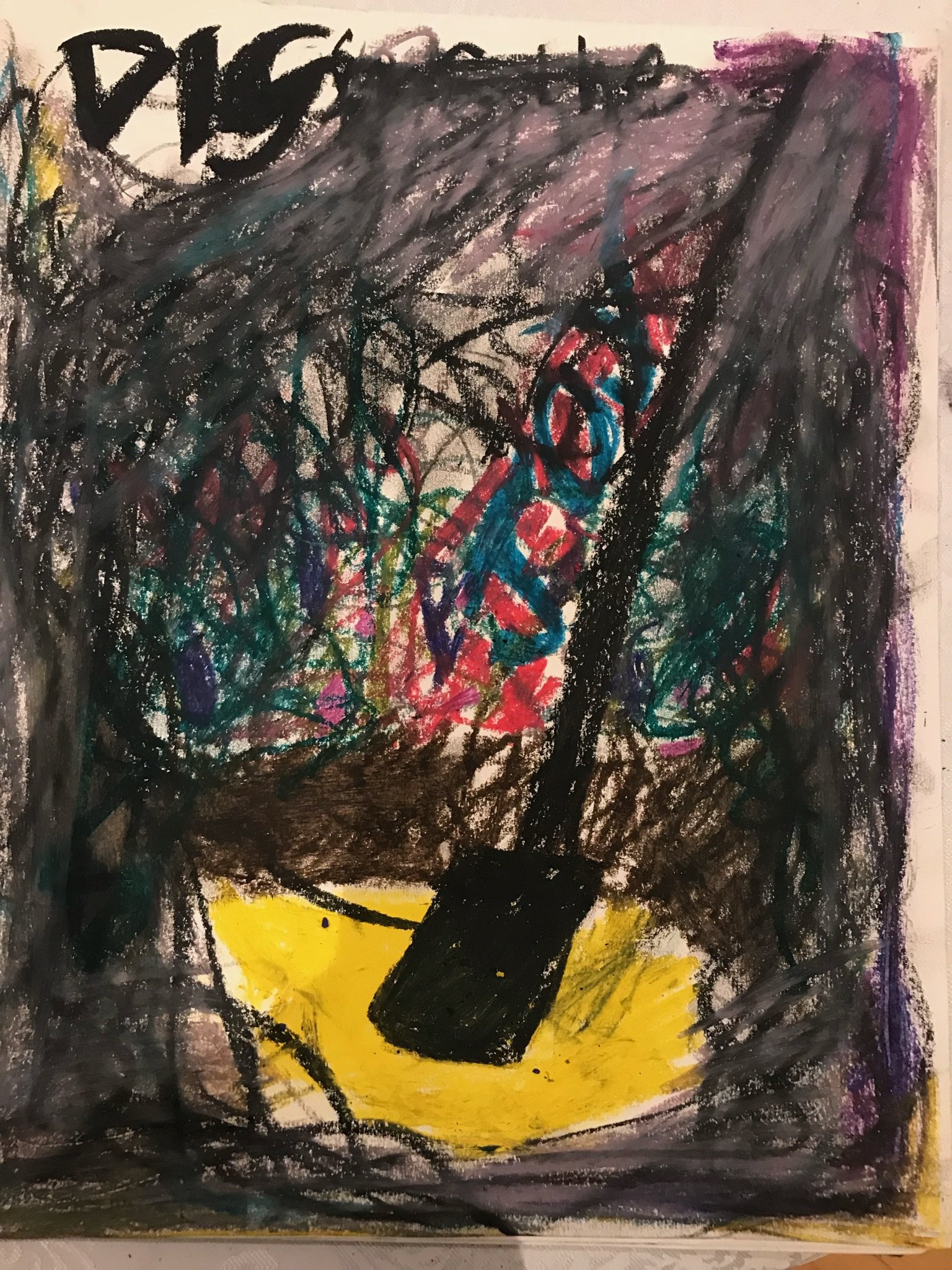My journey to therapy
Summary:
Here is some information about me to help you get a feel for my work.
How personal should an "about me" therapy bio page be?
Audio below
No-one goes to therapy to hear the life story of a therapist. A therapist’s life story is not and should not be the focus of therapy.
However, as therapists, our life stories are always present in the room in some way. We may come to the work after (or in some cases during) our own experiences of loss, trauma, healing and transformation.
We certainly cannot ‘hide’ behind theory. There is no “objective” therapist, in the sense that our experiences, learning and backgrounds inevitably shape how we are in relationship and provide a lens for our worldview.
I have therefore chosen to share a little more of my story below. I hope that knowing a bit more about me might help you to decide whether working together feels like a fit.
A frozen waterfall and glacier in the snow.
As a young child, I experienced freedom, joy and awe while dancing. Despite this, I disconnected early on from my inner self, and from faith, creativity and intuition, losing touch with my inner trust and trust in the world after I unconsciously internalised messages about the nature of the world, myself and other people, from my family of origin, my education and my mixed British heritage.
This showed up later as depression, confusion and crisis and as a lost sense of purpose and meaning. In order to be “good”, I learnt to prioritise my ‘rational’ thinking mind. I turned my back on my dance training to pursue expected pathways.
I was a highly sensitive child, and the only child of loving parents both born during the Second World War with their own parents either absent fighting, or evacuated and under stress, in Britain and Turkey. Born in central London, I was raised in South London after a fire destroyed our home when I was two.
Today, I know my parents did the absolute best they could with the tools that they had, and I am so grateful for their love and support. However, some of the ways they learnt to deal with life resulted in parenting that I experienced as invalidating at times.
Healing is not just about validation. It is also about action.
As a child I was often externally successful (academically, artistically or socially) while in internal states of fear, adrenaline, distress or dissociation. The ADHD that was diagnosed in my forties was overlooked in the 1970s and 80s, and I was frequently chastised for lack of concentration and impulsivity at school and in ballet training.
I developed toxic shame and dialogues of self-hatred that took many decades to shift.
In common with many who experienced issues such as neurodiversity in a non-affirmative environment or family addiction, I was sensitized towards power, and power imbalance and abuse. I was drawn to environments and systems that replicated younger experiences of powerlessness, helplessness and overwhelm. Before training as a therapist I worked in different settings and capacities in Mexico, the Caribbean, South Africa, France, Spain, Turkey and the UK.
I was also drawn to activism, perhaps finding it easier to advocate for others at that stage than myself. I spent a number of years doing research and campaigning in human rights organisations before I trained and worked briefly as a lawyer (an English ‘solicitor’). A focus of my work was torture prevention, and creating effective legal systems for investigation, oversight and accountability for human rights violations. I visited many different detention centres (prisons, police stations, jails and immigration detention facilities) and worked with homeless populations and as an adviser to refugees, asylum seekers and other migrants.
These experiences informed my systemic worldview and understanding that clients must be understood in the context of the systems (families, organisations, societies, nation states and so on) that they influence and that influence them.
I therefore understand that what the medical model may label a ‘mental illness’ may thus be a logical and sane response to structural violence or other forms of internalised, interpersonal, institutional or structural oppression.
I was always curious about the inter-relationship between justice and healing. In my early twenties I was raped at work. That experience, and the experiences of interacting with authorities afterwards, drew me away from a preoccupation with justice towards a deeper inquiry into the nature of my own healing and how to find peace amid (to me) uncomfortable external circumstances.
Ultimately, I turned back towards my own work, thanks to a number of life experiences that made this a necessity. As my focus shifted from trying to control the external towards inner work, my understanding of therapy evolved also.
I became particularly curious about the interactions between early onset developmental trauma and subsequent development of PTSD or traumatic stress syndrome, and in constructs used to define and describe the phenomenon we call ‘trauma’; both external events and inner experiences. While many trauma treatments were premised on the idea of the existence of safety, I noticed that many people I worked with were experiencing an ongoing lack of safety with a need for different solutions. Alternative constructs such as Continuous Stress Syndrome, for example, developed in South Africa, acknowledged this and also acknowledged that ‘solutions’ must lie not just within the therapy rooms but in wider economic and social change. As I walked through my own recovery from ‘big T’ and ‘little T’ events, I came to appreciate the need to work consciously, one day at a time, with my own body, mind, emotions and soul.
In the course of these inquiries, I came back to my early training in dance, retraining and working as a contemporary dancer, after having a family and migrating to Switzerland.
My experiences in law, dance and therapy made me particularly curious about the relationship between words/thinking, sensations/feelings, and actions/movement.
I noticed that, when I danced, certain movements made me feel well, able to function, and even joyful, when I could access and allow them.
Dance and movement also provided space for expressing the complex, the unsayable, the confusing, with a lot of peace and freedom emanating from not having to ‘explain’ or ‘translate’ things into words.
Dance movement therapy’s understanding of the self as embodied made sense to me. Movement was not so much a representation of the self as the actual self.
Dance, movement, stillness, sensory experiencing and relationship have been the containers for my own slow, steady and ongoing shift towards coherency and deep relaxation.
The process of finding safety in my body was, and is, a gradual journey of constant returning, rather than a static achievement. It was my experience that the defences to settling and yielding in the body have good reason to exist and should be respected, and worked with gently, not violently ripped away.
I was particularly influenced by my training with Professor Christine Caldwell, founder of the Moving Cycle. With this form of body psychotherapy, the focus is on the return to bodily authority. The role of the therapist is to act as a sort of ‘midwife’, attuning to the client’s - and the therapist’s own - sensations, breathing, feelings, movements and thoughts, to support that process.
This, along with my own evolving relationship to my neurodiversity, inspiration from the work of excellent colleagues all over the world, and wider changes in the mental health field, shaped big shifts in how I work with myself and how I approach therapy.
I was privileged to be able to have extensive psychodynamic therapy in my twenties and thirties and for the opportunity for that long, safe reparative relationship. Today however my frame is more oriented towards agency, cultural resourcing, safety, pleasure and freedom than psychodynamic theory. As an enactive therapy, with a focus on learning by experiencing and by doing, DMT seems to me to be the perfect modality for this.
I am also influenced by 12-step recovery and other peer support programmes that value equality and challenge the notion that humans can be divided into ‘experts’ and ‘patients’. These models suggest that each of us has our own source of inner guidance and may be simultaneously capable of great wisdom and service while facing challenges.
“None of us are doctors. We are all patients. We are all trying to get better.”
Therapy is evolving fast today and increasingly is recognised as just one of many useful recovery and healing processes available to humans. I understand ‘recovery’ to be a dynamic, continuous phenomenon, with individual and collective healing to be closely intertwined.
I do not see a therapist as an ‘expert’ on their client but rather as someone bringing their professional training and experience into the room, in a spirit of curiosity, discovery and inquiry, in service of the client. The client (you) are the expert on your own life, self and experience. My focus is on working in partnership with your particular values, worldview and goals.
I was never able to change myself through self-hatred. Self-compassion, self-accountability and action have worked better (I tried both!).
Ultimately, my own experience of the work has been that it is more about ‘becoming’ (stripping away that which prevents us from fully inhabiting ourselves to become fully human) than ‘doing’ (pursuing quests for transformation or perfection premised on rejection of the self).


